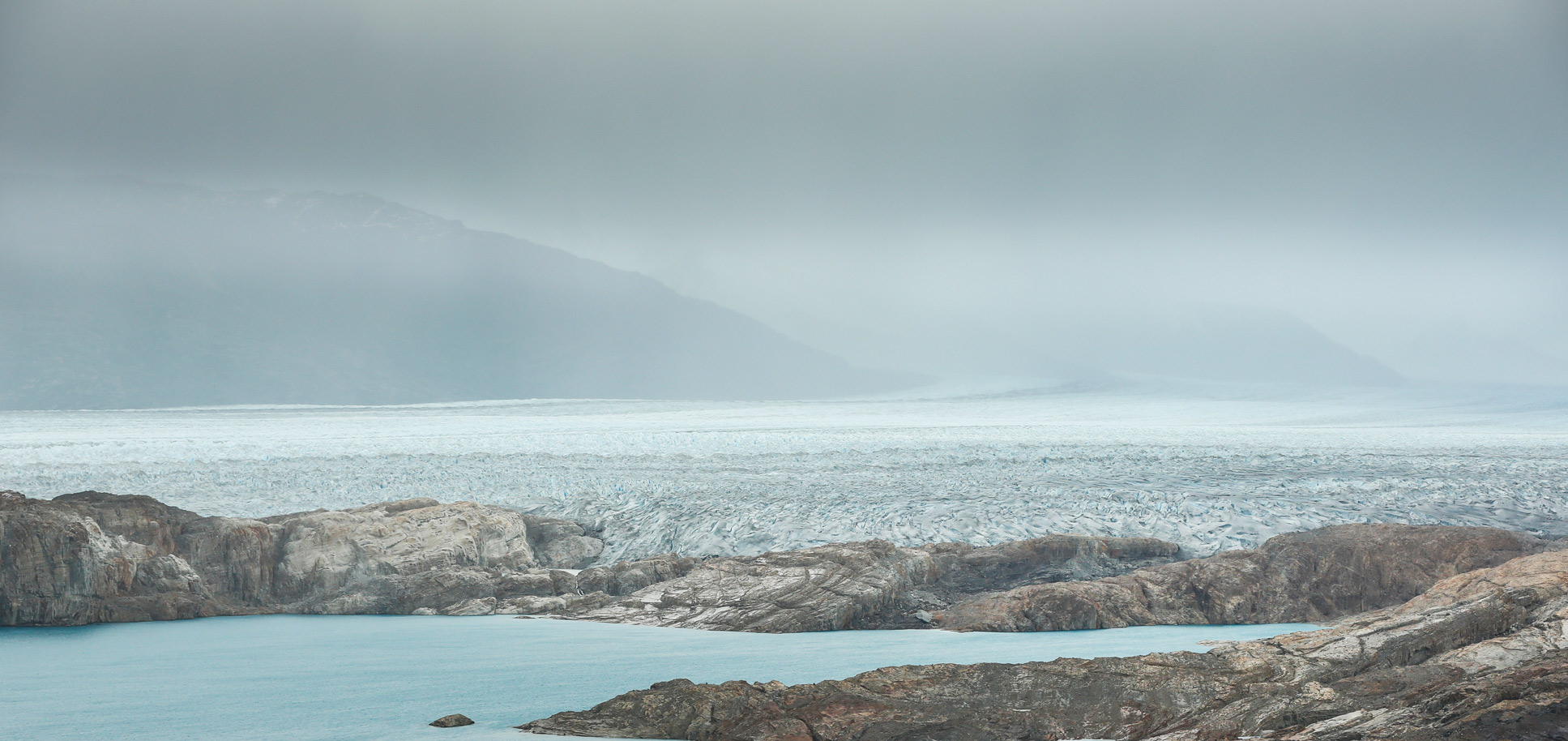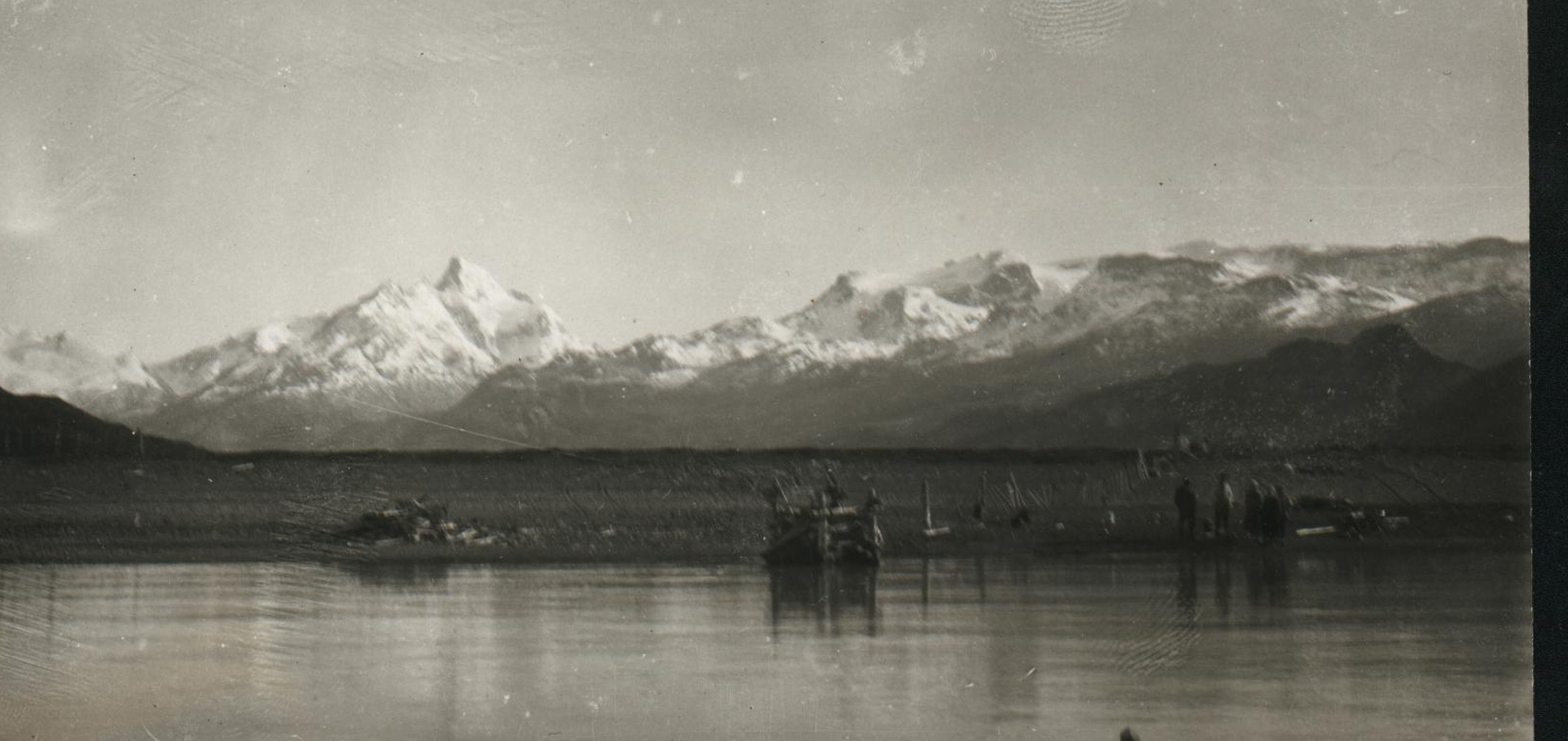The first written record is from Hesketh Prichard who, in 1901, called it The Giants glacier… But it was in 1908 when a Swedish expedition baptized it as Upsala Glacier, and this name was trendy enough to clear off the records of the first name. But the first expedition which traveled along it was the one of Padre D Agostini, but that is a story I will tell you later.
The great grand land under the big gigantic sky with the pink clouds and gliding birds, would not and will not be the same without the massive piece of ice that is stuck upon it.
Crevasses furrow the palid ice, denoting how long that ice lay, living, there 110.000 Ac is the dated time when this nature spectacle settled in.
Smaller glaciers, called tributaries, join the flow causing the main glacier to grow in size. Then, with the rising temperatures, the glaciers lose ice and consistency because of melting and evaporation. The water from the melted stream flows out through tunnels and channels that we sometimes do not see. So the first characteristic of a glacier is that the ecosystem of the place makes it possible to gain more snow in the form of ice and lose less ice in the form of water.
Glaciers have cycles, we are in a geologic period where glaciers are melting, though we can see that some glaciers are melting at a faster rate due to climate change.
The glacier that I would like to tell you about is a special one, it is a glacier that melts slower than most, it is a glacier that has a mother, a glacier that is always fed.
Glaciar Upsala is the third biggest glacier in South America. By 2014 the calculated surface was 839 km2, it is about 43 km long and 10km wide.
Glaciers have an accumulation zone and an ablation zone, the accumulation zone is where it is fed and the ablation zone is where it loses weight. Glaciar Upsala´s accumulation zone is born in the mother plateau of the Campo de Hielo Sur and is adjoining the second and first biggest glaciers of South America, the Viedma glacier and Pio XI glacier. So you can imagine the weather over there, moistened storms feeding the three biggest glaciers of the Andean range almost all year round.
As you travel east through the glacier you can see how it also receives tribute from the mountains that surround it, Mt Murallón, Cono and Bertacchi. To then start melting when arriving at Lago Argentino.
Glaciar Upsala is a fortunate one, but he also bears the sentence of approaching death. Glaciers all over the world are melting so fast, it’s likely that the next generations will not be able to know most of them.
This glacier has not been an object of study for many scientists, but thanks to some new technologies with digital elevation models which track from space, it was possible to make high-resolution topographic maps. These maps show that the glacier’s surface decreased by 6.6 m per year between 2000 and 2006, a rate that increased to 22.4 m per year from 2006 to 2009, and in 2009 2010 reached 25 m per year. And then forwards, the news is not better, the melting has increased four times.
But as I said, the glacier is so big that the death sentence will not be applied so soon. I believe this will be a glacier that not only the next generation will know, but the following too. This glacier is now a Patagonian Emblem, but soon it will be the emblem of a time when the weather was so harsh that big pieces of land froze up through ages, cooling the earth and preventing it to singe.
Or maybe, it will be an emblem for those who are still striving for climate change awareness.








